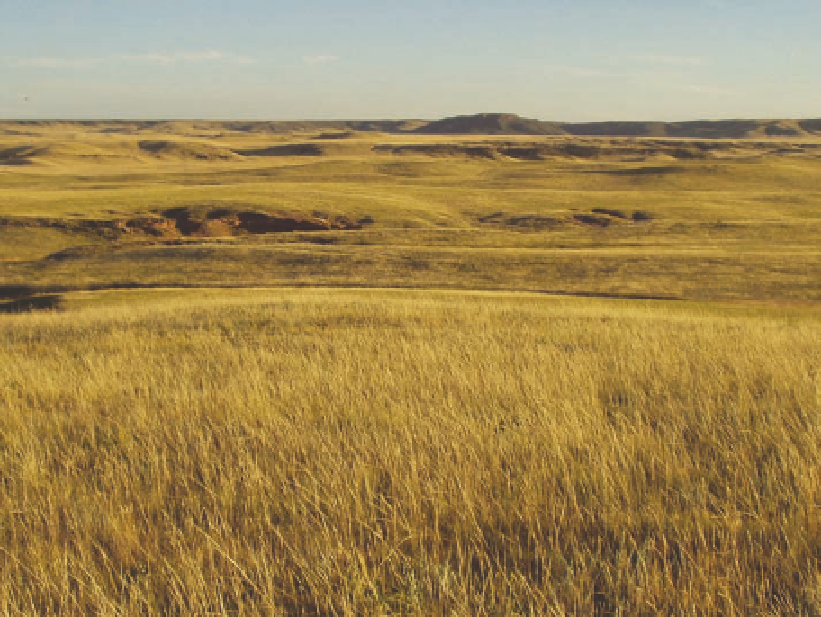Geoscience Reference
In-Depth Information
Fig. 17.8. (above) Mixed-grass prairie after a favorable growing
season in the northern part of the Laramie Basin. common
grasses are blue grama, indian ricegrass, junegrass, needle-
and-thread grass, Sandberg bluegrass, and western wheatgrass.
elevation 7,100 feet.
Fig. 17.9. (left) true mountain-mahogany grows on the shal-
low soils of the ridges (Forelle Limestone), and black sage-
brush dominates the shrubland in the foreground, underlain
by Satanka shale. the city of Laramie is in the background, at
an elevation of 7,165 feet.
Above the basin floor, where annual precipitation
is much greater, mountain forests are more common,
especially to the west, where dense forests of lodge-
pole pine, engelmann spruce, subalpine fir, and occa-
sional groves of aspen are widespread (see chapter 11).
curiously, driving into the Medicine Bow Mountains,
one travels almost directly from the grasslands and
shrublands into lodgepole pine or aspen forest, unlike
elsewhere in the Rockies, where a widespread foothill
transition zone occurs, with juniper, limber pine, pon-
derosa pine, or Douglas-fir (see chapter 10). Much of the
west side of the basin floor seems too high for the usual
foothill transition. the Laramie Mountains on the
east are drier, and the typical foothill pattern is more


Search WWH ::

Custom Search